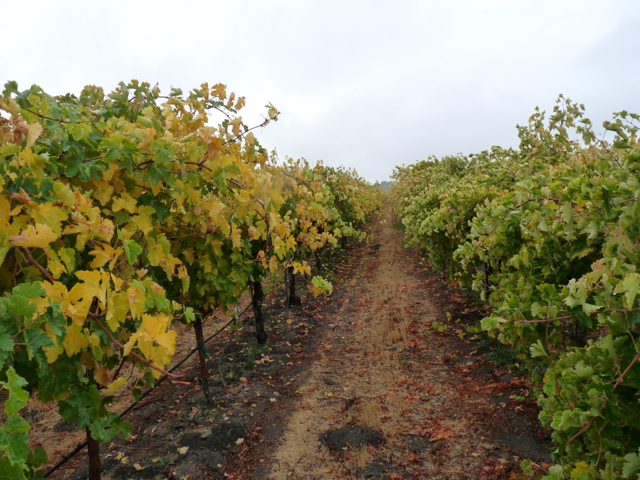Chairwoman Stabenow Applauds Appointment of Members to New Ag Research Foundation Board
Source: United States Senate Committee on Agriculture Nutrition & Forestry
Senator Debbie Stabenow, Chairwoman of the U.S. Senate Committee on Agriculture, Nutrition and Forestry, today issued the below statement regarding the appointment of board members to the Foundation for Food and Agricultural Research – a new non-profit foundation created by the 2014 Farm Bill, which will leverage private and public funding to advance agricultural research.
The 15-member board of directors was officially announced today and is meant to represent the many diverse agricultural perspectives and voices and areas of expertise.
“This new Research Foundation is one of the most important victories in the Farm Bill,” Stabenow said. “We designed this foundation to leverage public-private dollars to continue making America the most productive and efficient agricultural producer in the world. America sets the gold standard for safe, abundant food production across the globe, and that’s largely because of a commitment to research and decades of investment in agricultural innovation and cutting edge practices. The appointment of board members is the first step in getting the new Foundation for Food and Agricultural Research up and running.”

Dr. Deborah Delmer
“Agricultural research today is a critical component in American–and global–health and security,” said Michigan State University President Lou Anna K. Simon. “Senator Stabenow deserves great credit for her leadership in establishing the foundation in the Farm Bill, and the USDA’s choice of MSU’s Dr. Douglas Buhler for the foundation board adds a highly knowledgeable and experienced scientist and administrator.”
“We’re delighted to see the foundation up and running and proud that NCGA Chairwoman Pam Johnson will serve on the board of directors,” said National Corn Growers Association President Martin Barbre. “The new Foundation for Food and Ag Research promises to be an important tool for greater innovation in agriculture, especially as we face the challenge of feeding a growing population, and we are grateful for the leadership of Sens. Stabenow and Cochran for making this a priority in the 2014 Farm Bill.”
Under the leadership of Chairwoman Stabenow and Ranking Member Cochran, Section 7601 of the Farm Bill created the Foundation for Food and Agriculture Research, a non-profit foundation that will raise private funds to match $200 million in public funds that will be directed toward agricultural research.
The Farm Bill directed the Department of Agriculture to appoint board members who will guide the foundation’s research activities. The foundation will fund research collaborations between agricultural researchers from the federal government, institutions of higher education, land-grant universities and non-profit organizations.
The 15 members appointed to the Foundation board include:
- Dr. Kathryn Boor – the Ronald P. Lynch Dean of the College of Agriculture and Life Sciences, Cornell University
- Dr. Douglas Buhler – Director of AgBioResearch and Senior Associate Dean for Research for the College of Agriculture and Natural Resources, Michigan State University
- Dr. Nancy Creamer – Distinguished Professor of Sustainable Agriculture and Community Based Food Systems, North Carolina State University
- Dr. Deborah Delmer – Professor Emeritus of Biology, University of California-Davis
- The Honorable Dan Glickman – former U.S. Secretary of Agriculture, current Executive Director of the Aspen Institute’s Congressional Program
- Dr. Robert Horsch – Deputy Director, Bill & Melinda Gates Foundation
- Pamela Johnson – Chairwoman, National Corn Growers Association
- Dr. Mark E. Keenum – President, Mississippi State University
- Dr. Michael Ladisch – Director of the Laboratory of Renewable Resources Engineering and Distinguished Professor of Agricultural and Biological Engineering, Purdue University
- Dr. Christopher Mallett – Vice President of Research & Development, Cargill, Inc.
- Dr. Pamela Matson – Chester Naramore Dean of the School of Earth Sciences, the Richard
and Rhoda Goldman Professor of Environmental Studies and Senior Fellow at the Woods Institute for
the Environment, Stanford University - Dr. Terry McElwain – Associate Director and Professor, Paul G. Allen School for Global Animal Health, and Executive Director, Washington Animal Disease Diagnostic Laboratory, Washington State University
- Dr. Stanley Prusiner – Director of the Institute for Neurodegenerative Diseases and Professor of Neurology, University of California-San Francisco and 1997 Nobel laureate in physiology or medicine
- Dr. Yehia “Mo” Saif – Professor Emeritus, The Ohio State University
- Dr. Barbara Schaal – Professor of Biology at the College of Arts and Sciences, and Professor of Genetics at the Medical School, Washington University at St. Louis
The five ex-officio board members, all of whom were designated by Congress, are USDA Secretary Tom Vilsack; Dr. Catherine Woteki, USDA’s Under Secretary for Research, Education, and Economics and
Chief Scientist; Dr. Chavonda Jacobs-Young, Administrator of the USDA’s Agricultural Research Service; Dr. Sonny Ramaswamy, Director of the USDA’s National Institute of Food and Agriculture; and Dr. France A. Córdova, Director of the National Science Foundation.
More information about the 2014 Farm Bill can be found here.


















